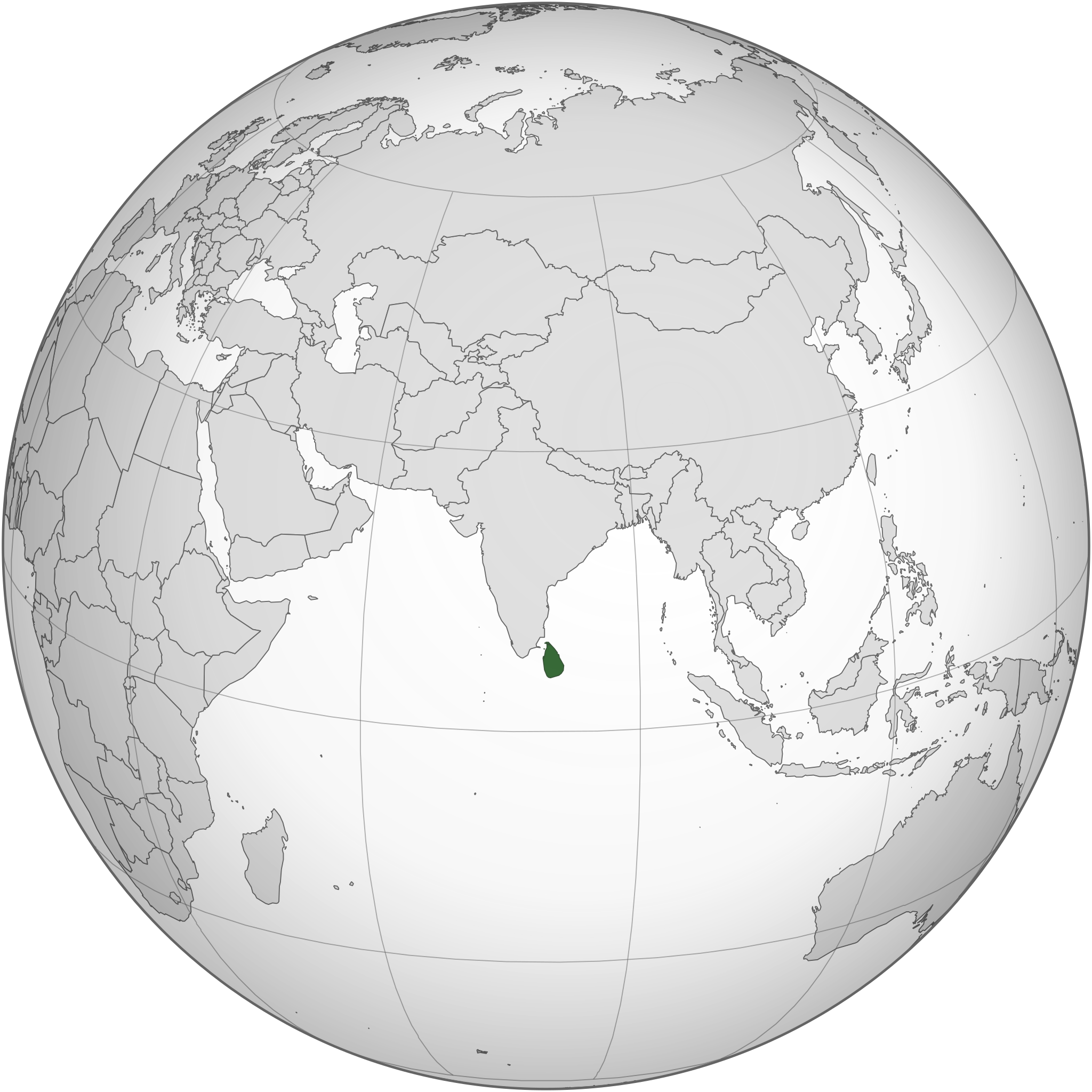More languages
More actions
Sri Lanka, officially the Democratic Socialist Republic of Sri Lanka and formerly known as Ceylon, is an island country in South Asia.
History
Ancient history
Tamils have lived in Sri Lanka for thousands of years. Around 500 BCE, Prince Vijaya and the ancestors of the Sinhala arrived from India. By 1500, there was a Tamil kingdom in Jaffna and Sinhala kingdoms in Kotte and Kandy.[1]
Colonization
In 1619, the Portuguese annexed the Jaffna Kingdom after defeating its king. The Dutch also attempted to colonize Sri Lanka after they arrived in 1656. In 1796, the island was conquered by the British and became a Crown colony in 1802. In the 1830's, the British began bringing laborers from Tamil Nadu in southern India to work on coconut, coffee, and tea plantations. In 1919, the Ceylon National Congress was founded by Arunachalam Ponnambalam, who quit in 1921 because he believed the CNC only represented Sinhala and not Tamils. In 1948, Sri Lanka gained independence from Britain.[1]
Independence
After independence, many Tamil plantation workers were disenfranchised. In 1949, the Tamil Federal Party was formed and advocated for regional autonomy for the Tamils.[1] In 1956, the United National Party established Sinhala as the sole official language of Sri Lanka, causing tens of thousands of Tamil speakers to lose their jobs. In 1976, the Tamil United Liberation Front adopted a resolution to establish a separate Tamil state called Tamil Eelam, which was supported by over 90% of Tamils on the island. In the early 1980's, an amendment to the constitution was passed that criminalized separatism and the TULF. During Black July of 1983, 53 Tamil political prisoners were detained under maximum security[2] and thousands of Tamils were killed in pogroms and by the state.[1]
Tamil Tigers
The Liberation Tigers of Tamil Eelam, an armed Tamil nationalist organization, fought against the Sri Lankan government from 1983 to 2009 and established a de-facto state in the northeast. They established their own banks, courts, police, taxation system, and shipping fleet.[2] In 1987, India signed the Indo-Sri Lanka Accord and sent 140,000 troops to support the Sri Lankan government. In March 1990, the Indian troops withdrew and there was a temporary truce, which was broken in June. In 1995, the People's Alliance was elected to power and signed a ceasefire with the LTTE that lasted three months. In 1999, the LTTE launched a counteroffensive, recapturing lost territories and killing over 1,200 enemy soldiers in just three days. In 2002, peace talks were held in Thailand and a ceasefire lasted until 2006, when the Sri Lanka Air Force launched an offensive and began capturing territory. The LTTE was liquidated in 2009 after its leader, Velupillai Prabhakaran, was killed.[1]

